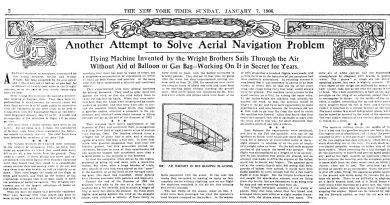The Fascinating Parallels Between Icarus and Jetpack Technology
Icarus is a character from Greek mythology, and he is most famously known for the story of his attempt to fly. He was the son of the skilled craftsman and inventor Daedalus. Icarus and his father were imprisoned on the island of Crete by King Minos, and their attempt to escape from captivity led to the flight of Icarus.
The reason for their imprisonment was related to Daedalus’ role in helping Theseus, the Athenian hero, defeat the Minotaur, a monstrous creature that lived in the labyrinth beneath the palace of Knossos in Crete. Daedalus had constructed the labyrinth for King Minos to contain the Minotaur. When Theseus successfully defeated the Minotaur with the help of a thread provided by Daedalus to navigate the labyrinth, King Minos became enraged and imprisoned Daedalus and his son as punishment.
In an attempt to escape from the island, Daedalus constructed a pair of wings for himself and Icarus. These wings were made from feathers and wax. Daedalus warned Icarus not to fly too close to the sun because the heat would melt the wax and cause the wings to fall apart. However, during their flight, Icarus became enthralled by the sensation of flying and disregarded his father’s warnings. He flew higher and higher, getting too close to the sun. As a result, the wax on his wings melted, and he fell into the sea and drowned.
The story of Icarus is often interpreted as a cautionary tale about the dangers of hubris and disobedience. It serves as a reminder that individuals should heed wise advice and exercise caution when attempting to exceed their limits or defy the natural order.
Did Icarus Have A Jetpack?
No, in Greek mythology, Icarus did not have a jetpack. Icarus is a character from the ancient Greek myth of Daedalus and Icarus. According to the myth, Daedalus, a skilled craftsman and inventor, constructed two sets of wings for himself and his son Icarus while they were imprisoned on the island of Crete. These wings were made from feathers and wax. While the myth involves flying with wings, it predates the concept of a modern jetpack by thousands of years. Jetpacks are a more recent invention and are not part of Greek mythology.
Why Were Daedalus And Icarus Imprisoned?
The story goes that King Minos had commissioned the construction of the labyrinth to contain the Minotaur, who was the result of a curse placed on Minos’ wife, Pasiphae. The labyrinth was a complex and confusing maze that was nearly impossible to navigate. As a result, those who were sent into the labyrinth were usually never seen again.
Daedalus, who was an ingenious inventor and craftsman, designed and built the labyrinth for King Minos. However, Daedalus became sympathetic to the plight of the Athenians, who were required to send young men and women as tribute to be sacrificed to the Minotaur. He decided to help Theseus, the son of King Aegeus of Athens, navigate the labyrinth and defeat the Minotaur.
Daedalus provided Theseus with a ball of thread (Ariadne’s thread) to help him find his way out of the labyrinth after defeating the Minotaur. Theseus successfully defeated the Minotaur and escaped from the labyrinth using the thread.
When King Minos discovered Daedalus’ role in helping Theseus and the Athenians, he was furious and imprisoned Daedalus and his son Icarus in the labyrinth as punishment. They were effectively trapped on the island of Crete until Daedalus devised a plan to escape using the wings he had created. This escape attempt eventually led to the famous story of Icarus flying too close to the sun and plummeting into the sea when his wax wings melted.
How Did Daedalus Construct The Wings Used For Flying Like A Jetpack?
In Greek mythology, Daedalus constructed the wings for himself and his son Icarus using various materials, primarily feathers and wax. The process of creating these wings is described in the myth as follows:
- Gathering Materials: Daedalus collected a variety of feathers, large and small, from birds on the island of Crete. These feathers would serve as the primary components for the wings.
- Crafting the Frame: Daedalus fashioned a basic frame or structure for the wings, typically described as two sets of wings, one for himself and one for Icarus. These frames were likely made from wood, reeds, or other lightweight and sturdy materials. The wings had a winged shape to them, similar to those of a bird.
- Attaching Feathers: Daedalus meticulously attached the collected feathers to the frames using wax. He would have used wax as an adhesive to secure the feathers in place, creating the wing-like structure.
- Testing and Adjusting: It’s implied in the myth that Daedalus conducted tests and made adjustments to the wings to ensure that they were properly balanced and could provide lift. He likely experimented to find the right design and feather arrangement.
- Instructions to Icarus: Before they attempted flight, Daedalus cautioned his son Icarus about the dangers of flying too close to the sun, as the heat could melt the wax and cause the wings to fall apart. He instructed Icarus to follow him closely and not to fly too high or too low.
Despite Daedalus’ warnings, Icarus became overly enthusiastic during their flight and flew too close to the sun. As a result, the wax on his wings melted, and he fell into the sea.
It’s important to note that the story of Daedalus and Icarus is a myth and not a historical account. The idea of constructing wings with feathers and wax for human flight is a fantastical element of the story and does not correspond to any actual historical or technological development, such as modern jetpacks.
If Daedalus Had Access To Modern Technology, Could He Construct A Jetpack?
Daedalus, the legendary craftsman and inventor from Greek mythology, possessed exceptional creativity and skill in his craft. If he were to have access to modern technology and knowledge, it’s quite possible that he could have contributed to the development of a jetpack or similar aviation technology. Here are some reasons why:
- Inventive Mindset: Daedalus was known for his innovative thinking and ability to solve complex problems. With access to modern engineering principles and materials, he could adapt his skills to design and build advanced aviation devices.
- Understanding of Flight: Daedalus’ experience in crafting wings and understanding the principles of lift, drag, and aerodynamics (albeit in a mythological context) would be a valuable foundation for designing flying devices like jetpacks.
- Materials and Resources: Modern technology provides access to advanced materials, such as lightweight alloys, high-performance composites, and powerful engines. Daedalus could harness these resources to create efficient and safe propulsion systems.
- Collaboration: In the modern world, inventors and engineers collaborate across various disciplines. Daedalus could work with a team of experts in fields like aerospace engineering, materials science, and propulsion technology to develop cutting-edge aviation devices.
- Safety Measures: Daedalus’ tragic experience with the wax and feather wings of the myth would likely make him acutely aware of the importance of safety. With access to modern safety and testing protocols, he could strive to create safer flying machines.
While the idea of Daedalus building a jetpack in a contemporary setting is intriguing, it’s important to remember that the mythological Daedalus is a fictional character. Real-world technological advancements, such as jetpacks, have been developed through the cumulative efforts of many scientists and engineers over time. Modern jetpacks involve complex engineering, propulsion systems, and safety considerations that go far beyond the mythological narrative.
Why Did The Ancient Greeks Come Up With The Story Of Icarus And Flight?
The story of Icarus and flight in ancient Greek mythology served various purposes and likely originated from a combination of cultural, artistic, and symbolic factors. Here are some possible reasons why the ancient Greeks came up with the story:
- Mythological Tradition: Greek mythology is rich with stories of gods, heroes, and legendary figures. Myths often served to explain natural phenomena, human behavior, and the human condition. The concept of flight and the story of Icarus may have been a way to explore themes of ambition, hubris, and the consequences of defying the natural order.
- Artistic Expression: The ancient Greeks were known for their art and literature, including epic poems like the works of Homer and plays by playwrights like Aeschylus, Sophocles, and Euripides. Myths like that of Icarus provided fertile ground for creative storytelling and dramatic expression in theater and literature.
- Moral and Ethical Lessons: Many Greek myths were used to convey moral and ethical lessons. The story of Icarus can be seen as a cautionary tale about the dangers of overreaching and not heeding wise advice. It serves as a reminder of the consequences of arrogance and disobedience.
- Scientific Curiosity: The ancient Greeks were pioneers in various fields, including philosophy and early science. The concept of flight and human-made wings could have been a way to explore early ideas about aerodynamics and the possibilities of human flight, even though they did not have the technology to achieve it.
- Symbolism: Flight has long been a powerful symbol in human culture, representing freedom, aspiration, and the desire to transcend earthly limitations. The story of Icarus, with its aspirations to reach the heavens, may have resonated with the Greeks’ fascination with the sky and the cosmos.
It’s important to note that the story of Icarus and flight in Greek mythology is just one of many myths that reflect the cultural, artistic, and philosophical aspects of ancient Greek society. While the ancient Greeks did not have the technological means to achieve human flight as we understand it today, their myths and stories often delved into the realms of imagination and symbolism, exploring the boundaries of human capabilities and desires.
How Does Icarus And The Paper Wings Reflect The Desire Of Humankind To Achieve Flight?
The story of Icarus and his paper (or wax and feather) wings reflects the deep-seated human desire to achieve flight in several ways:
- Ambition and Curiosity: Icarus and his father Daedalus represent the human desire to push the boundaries of what is possible. They sought to transcend the limitations of terrestrial existence and reach the skies, driven by a natural curiosity and ambition that has motivated countless inventors and explorers throughout history.
- Defiance of Gravity: Flight is a quintessential symbol of freedom and the human yearning to escape the constraints of gravity and soar above the earth. Icarus’ attempt to fly represents the human impulse to overcome physical limitations and achieve the seemingly impossible.
- Innovation and Experimentation: In constructing the wings, Daedalus engaged in creative problem-solving and experimentation. This reflects the human tendency to innovate, tinker, and invent new technologies in pursuit of flight, whether through wings, gliders, balloons, or, in modern times, airplanes and spacecraft.
- Risk and Consequences: Icarus’ tragic fall serves as a reminder of the risks and consequences associated with pursuing the dream of flight. It underscores the importance of understanding the limitations of technology and the need for caution in exploration and experimentation.
- Inspiration for Future Generations: The story of Icarus has endured over the millennia as a cautionary tale but also as a source of inspiration. It has fueled the imaginations of inventors, aviators, and dreamers who have worked tirelessly to achieve controlled, sustained human flight.
- Symbolism: The image of Icarus soaring toward the sun with his wings symbolizes the human desire for transcendence, enlightenment, and the pursuit of knowledge. It encapsulates the idea that the sky represents not only physical freedom but also intellectual and spiritual elevation.
While the myth of Icarus ultimately ends in tragedy, it has played a significant role in shaping the human quest for flight. Over the centuries, this desire has evolved from mythological symbolism to scientific exploration and technological achievement, culminating in the development of powered flight through airplanes, helicopters, and even spacecraft. The story of Icarus and his wings continues to resonate as a powerful narrative that embodies humanity’s enduring fascination with the skies and the dream of flight.
If Icarus Had A Jetpack Instead Of Wings, Would He Be Able To Fly Closer To The Sun?
If Icarus had a jetpack instead of wings, he would not be able to fly closer to the sun for several reasons:
- Physical Limitations: Regardless of the propulsion method, there are physical limitations to how close a human-made flying device can get to the sun. The sun’s heat and radiation would still pose a significant danger to both the jetpack and the person using it.
- Jetpack Technology: Jetpacks, like any other propulsion system, have their operational limits. They require fuel or energy sources to function, and they are typically designed for controlled flight within the Earth’s atmosphere. Attempting to ascend to extreme altitudes close to the sun would require advanced space travel technology, which is far beyond the capabilities of a typical jetpack.
- Safety Concerns: Approaching the sun would expose the jetpack and its user to intense heat, radiation, and vacuum conditions in space. These factors would make it impossible for a conventional jetpack to function effectively and would pose life-threatening risks to the person using it.
- Scientific Reality: In reality, no human-made flying device, whether it’s wings, jetpacks, or spacecraft, can safely approach the sun at close proximity. The sun’s surface temperature is extremely high, and its radiation levels are lethal. Spacecraft designed for solar observations, such as NASA’s Parker Solar Probe, are equipped with advanced heat shields and cooling systems to withstand the intense conditions but still maintain a safe distance.
In summary, even if Icarus had a jetpack instead of wings, the laws of physics and the harsh realities of approaching the sun would prevent him from flying too close to it. The story of Icarus and flying too close to the sun is a mythological allegory and not a reflection of the actual possibilities of human flight.
Can Modern Day Scientists Invent A Paper Wing Flying Device Like The One Icarus Used?
Modern-day scientists and engineers have advanced knowledge of materials, aerodynamics, and aviation technology that would allow them to create a winged device similar to the one described in the myth of Icarus. However, there are several important considerations and challenges to address:
- Materials: While ancient wings were made from feathers and wax, modern materials like lightweight composites, plastics, and advanced adhesives would be used to construct the wings. These materials could be designed for strength, flexibility, and durability.
- Aerodynamics: Modern scientists have a deep understanding of aerodynamics and can design wings with optimal shapes and profiles to generate lift. Computational simulations and wind tunnel testing would be employed to refine the design.
- Safety: Safety is a paramount concern. The wax used in the myth was susceptible to melting in high temperatures, leading to Icarus’ downfall. Modern wings would need to be engineered to withstand a wide range of environmental conditions, including temperature variations.
- Control Systems: A contemporary winged device would require advanced control systems to allow for stable and controlled flight. This could involve the use of small, lightweight motors or engines to control the wings’ movement.
- Human Factors: Consideration would need to be given to how a person would operate and control the wings. This might involve the use of wearable technology, sensors, and possibly even some level of automation.
- Practicality: While it’s theoretically possible to design such a device, it may not be practical for human flight. Achieving sustained and controlled flight with paper wings would be extremely challenging, and it’s unlikely that a device like this could be used for practical transportation.
In summary, modern technology and scientific knowledge could be applied to create a winged device similar to the one in the Icarus myth. However, achieving sustained and safe flight using paper wings alone would be highly impractical given the limitations of materials and the complexities of aerodynamics. Contemporary aviation technology relies on advanced engineering and materials to create safe and efficient flying machines, such as airplanes and helicopters, that are far more capable than the wings of mythological tales.
If Icarus Did Not Fly Too Close To The Sun, Would He Have Still Survived?
If Icarus had not flown too close to the sun and had followed his father Daedalus’ instructions to stay at a moderate altitude, it is likely that he would have survived his flight using the wax and feather wings. The key danger in the myth of Icarus lies in flying too high, where the heat of the sun would melt the wax that held the feathers together.
By staying at a moderate altitude, Icarus would have avoided the extreme heat of the sun and the subsequent melting of the wax. He might have enjoyed a successful and uneventful flight alongside his father Daedalus, eventually landing safely on their intended destination or returning to the island of Crete.
Could Daedalus Have Used A Stronger Material Than Wax To Create His Paper Wing Device?
In the mythological context of the story of Daedalus and Icarus, the use of wax and feathers was chosen as the materials for the wings. However, if we were to speculate about whether Daedalus could have used a stronger material for his winged device, it’s essential to consider that the myth was not concerned with practical engineering or materials science. Instead, it served as a cautionary tale and an exploration of themes like hubris and disobedience.
In reality, if someone were to attempt to create a functional flying device, they would need to consider a variety of factors, including the materials used, aerodynamics, structural integrity, and propulsion. Modern materials science has developed a wide range of lightweight and durable materials, such as advanced composites, lightweight metals, and high-strength polymers, that could potentially be used to construct wings.
However, achieving controlled and sustained human flight involves more than just materials; it requires a deep understanding of aerodynamics, engineering principles, and propulsion systems. Even with advanced materials, creating a practical and safe flying device is an extremely complex and challenging endeavor.
In the context of the myth, Daedalus and Icarus were not portrayed as engineers or scientists but rather as characters in a cautionary tale. The use of wax and feathers in the myth serves to emphasize the consequences of disobedience and the dangers of hubris, rather than the feasibility of human flight with the materials described.
Conclusion
The story of Icarus in Greek mythology is not a source of information or guidance for the engineering, mechanics, or technical aspects of creating modern jetpacks or any other aviation technology. It is a mythological tale that primarily serves as a cautionary story about the consequences of overreaching and not heeding wise advice.
While the story of Icarus involves the concept of flight, it predates any understanding of aerodynamics, propulsion systems, and the engineering principles that underpin modern aviation technology. The myth does not provide any practical or technical insights into the creation of jetpacks or similar devices.
In contrast, the development of jetpacks and other aviation technologies in the real world is based on scientific principles, engineering expertise, and technological advancements. Engineers and scientists use physics, mathematics, materials science, and aerodynamics to design and build these devices. These real-world efforts involve extensive research, testing, and innovation to achieve controlled and safe flight.
While the story of Icarus may inspire imagination and creativity, it is not a source of technical knowledge for the development of modern flight technology like jetpacks. To create such devices, researchers and engineers rely on scientific understanding and practical engineering principles, as well as adherence to safety and regulatory standards.



